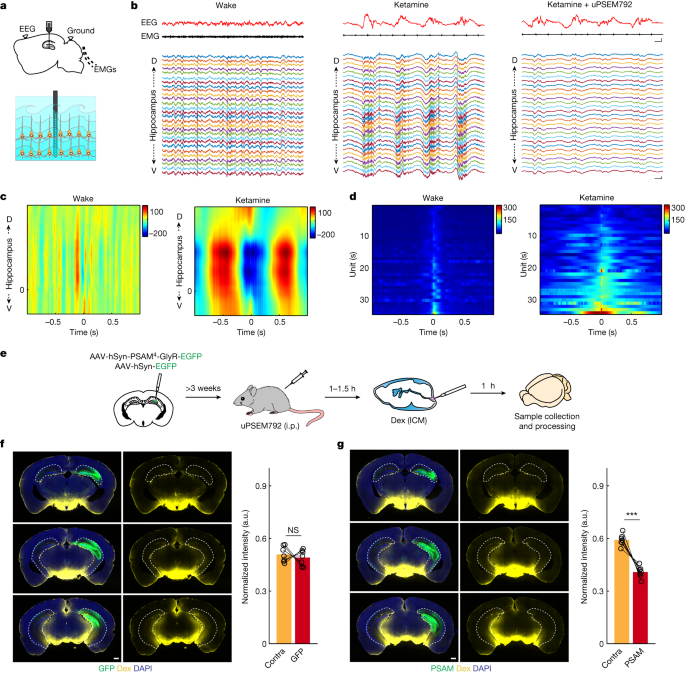Neuronal Dynamics in Brain Clearance Mechanism
Core Concepts
Our study reveals how neural networks orchestrate ionic waves in the brain, influencing cerebrospinal fluid perfusion and waste clearance, introducing a new theoretical framework for brain function.
Abstract
The content discusses the role of neural networks in orchestrating large-amplitude, rhythmic ionic waves in the brain's interstitial fluid, impacting cerebrospinal fluid perfusion and waste clearance mechanisms. Chemogenetic manipulation impeding these waves hindered fluid infiltration and molecule clearance, while optogenetic stimulation enhanced fluid perfusion. Neurons are identified as crucial organizers for brain clearance processes, offering insights into macroscopic brain wave functions.
Neuronal dynamics direct cerebrospinal fluid perfusion and brain clearance - Nature
Stats
Chemogenetic flattening impeded cerebrospinal fluid infiltration and molecule clearance.
Optogenetic stimulation potentiated cerebrospinal fluid-to-interstitial fluid perfusion.
Quotes
Key Insights Distilled From
by Li-Feng Jian... at www.nature.com 02-28-2024
https://www.nature.com/articles/s41586-024-07108-6
Deeper Inquiries
How do these findings impact our understanding of neurological disorders
The findings presented in the context shed light on a crucial aspect of neurological disorders related to the accumulation of metabolic waste in the brain. Understanding how neural networks orchestrate large-amplitude, rhythmic ionic waves that facilitate cerebrospinal fluid perfusion and clearance provides valuable insights into potential mechanisms underlying these disorders. By revealing that chemogenetic manipulation can impede this essential brain cleansing process, it suggests a direct link between neuronal dynamics and the development or progression of neurological conditions. This knowledge opens up new avenues for exploring therapeutic interventions aimed at enhancing brain clearance mechanisms to potentially mitigate or prevent such disorders.
What potential applications could arise from manipulating neural networks for brain clearance
Manipulating neural networks for brain clearance could have significant implications across various applications in neuroscience and clinical settings. One potential application is developing targeted therapies for neurological disorders by modulating neuronal activity to enhance glymphatic flow and metabolic waste removal from the brain parenchyma. This approach may offer novel treatment strategies for conditions where impaired clearance mechanisms play a role, such as Alzheimer's disease or other neurodegenerative disorders. Additionally, leveraging optogenetic stimulation techniques to generate synthesized waves that potentiate cerebrospinal fluid perfusion could lead to innovative non-invasive interventions for promoting brain health and function.
How might this research influence future studies on brain wave dynamics
This research on how neurons act as master organizers for brain clearance introduces a paradigm shift in understanding macroscopic brain wave dynamics. By demonstrating the pivotal role of synchronized action potentials in generating ionic waves that influence cerebrospinal fluid perfusion, future studies are likely to explore the broader implications of this phenomenon on overall brain function and health. Researchers may investigate how different types of neural activities impact glymphatic flow regulation and whether dysregulation of these processes contributes to neurological pathologies. Furthermore, this work sets the stage for investigating potential interactions between neuronal dynamics, cerebral spinal fluid dynamics, and cognitive functions mediated by macroscopic brain waves, paving the way for comprehensive investigations into complex neurophysiological phenomena.
0
